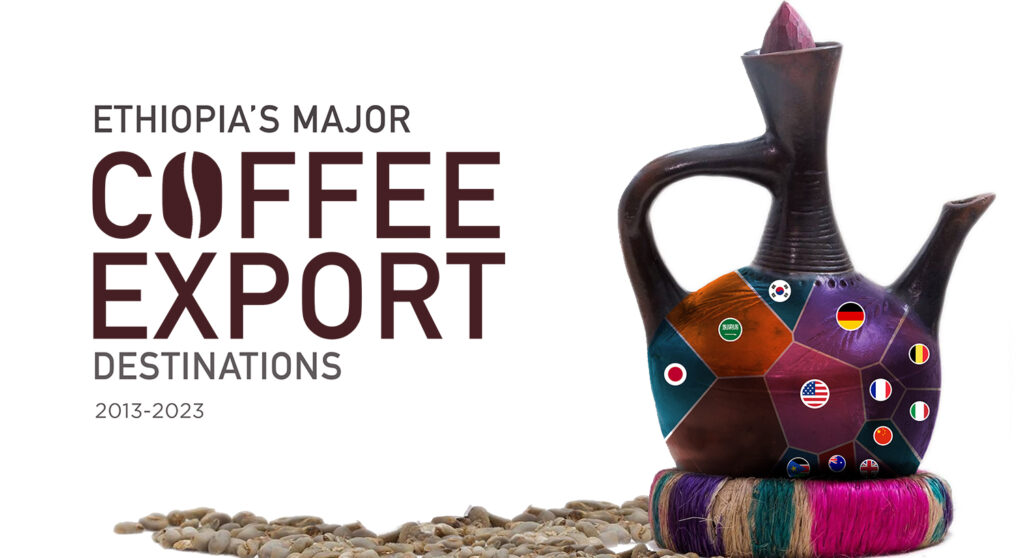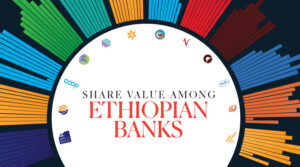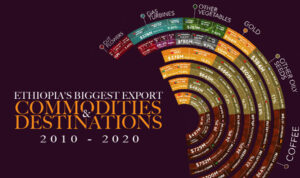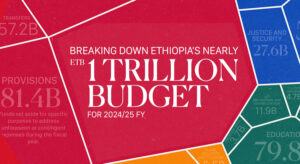For Ethiopians, “Buna ehn’tetah” is a social dialect with a definition running deeper than mere invitation. It’s a call for dialogue, connection, and quality time. It says much more than it says because coffee is a love language in its own right.

It seems the world has caught on to our passion. Today, Ethiopia’s coffee culture is more than a cherished tradition; it is a significant force in the global market. Ethiopia proudly contributes approximately 17% of the world’s coffee supply, standing as the fifth-largest coffee exporter globally. This humble bean has become the lifeblood of our economy, generating between 30-35% of the country’s foreign income. Recent trends suggest an even brighter future, with export growth steadily climbing. Global brands like Starbucks, Lavazza, Illy, and Nespresso showcase Ethiopian coffees for their unique flavors and quality, contributing to its global recognition and market presence. These brands emphasize Ethiopia’s diverse coffee regions and their distinctive profiles, highlighting the country’s rich coffee heritage and sustainable farming practices. This insight explores Ethiopia’s pivotal role in the global coffee trade, underscoring its profound social and economic impact while shedding light on the strategic initiatives propelling our coffee export sector forward.
Abol: A General Overview
In its wild state, Arabica coffee (Coffea arabica) thrives in Ethiopia’s highlands and parts of South Sudan. Ethiopians have cherished coffee for centuries, establishing Ethiopia as the biological and cultural heart of coffee. Today, Ethiopia dedicates about 600,000 hectares to coffee cultivation, potentially expanding to 2,000,000 hectares. Coffee is Ethiopia’s top agricultural commodity, contributing roughly a quarter of its export earnings. In 2023/24, Ethiopia exported 298,500 metric tonnes of coffee, valued at over $1.3 billion. Despite lower yields compared to other coffee producers, Ethiopia remains Africa’s largest coffee producer and the world’s fifth-largest exporter of Arabica coffee.

Between 1974 and 1991, under Marxist rule, Ethiopian coffee farms were consolidated into collective farms, selling to the government at subsidized prices. After 1991, the government allowed farms to form cooperatives and set fair prices. The 2008 launch of the Ethiopia Commodity Exchange (ECX) streamlined the trade of crops, including coffee. The ECX categorizes and sells coffee to the highest bidder, ensuring consistent taste and higher prices for growers but obscuring the original regional source. While 90% of Ethiopian coffee is traded through the ECX, purchasing through cooperatives is becoming more common.
Tona: Who is Growing Our Coffee?
Ethiopian coffee farms range from small, family-owned plots to expansive estates, with most coffee grown by smallholders who own less than a hectare of land and often use traditional farming methods. These methods include cultivating coffee plants under the shade of native trees in “garden coffee” systems, while “forest coffee” grows wild in natural forests, and “semi-forest coffee” involves some human intervention to manage the forest and coffee plants. Among the key producers in Ethiopia are the Oromia Coffee Farmers Cooperative Union (OCFCU), based in the Oromia region and supporting over 400,000 smallholder farmers. Oromia is Ethiopia’s largest coffee-producing region. The Sidama Coffee Farmers Cooperative Union (SCFCU) represents over 50 cooperatives and 80,000 farmers in the Sidama region, making it one of the largest and most influential coffee producers in the country. Additionally, the Yirgacheffe Coffee Farmers Cooperative Union (YCFCU), located in the Gedeo Zone, is known for producing high-quality, washed coffee and comprises 26 cooperatives with over 45,000 farmers.
Ethiopia’s diverse climate and topography create ideal conditions for coffee cultivation, dividing the country into several coffee-growing regions, each celebrated for its distinct flavor profiles. In Sidama, coffee is renowned for its bright acidity and floral notes, grown in the highlands at altitudes of 1,500 to 2,200 meters. The region’s climate and rich soil contribute to the coffee’s unique taste. Yirgacheffe, perhaps the most famous Ethiopian coffee, is known for its sweet, fruity flavors and aromatic complexity, cultivated at elevations between 1,700 and 2,200 meters in the Gedeo Zone. Harrar, located in the eastern highlands, produces naturally processed coffee with bold, wine-like flavors and a heavy body, often featuring notes of berry and chocolate. In western Ethiopia, Jimma is recognized for both washed and natural coffees, offering balanced acidity, full body, and flavors ranging from fruity to nutty. Similarly, Limu, also in western Ethiopia, typically produces washed coffee with a sweet, spicy, and floral flavor profile, grown at altitudes of 1,400 to 2,100 meters.
Barrakah: The Gains and Pains of Coffee Export
Ethiopia stands as one of the largest coffee producers in Africa and the world, with coffee exports being a significant source of foreign exchange earnings. Annually, Ethiopia exports approximately 200,000 to 250,000 metric tons of coffee, contributing around 25-30% of the country’s total export earnings. Ethiopian coffee reaches many parts of the globe, with major export destinations including Saudi Arabia, Germany, the United States, Japan, South Korea, and China. Saudi Arabia, with its cultural and historical ties to Ethiopia, remains one of the largest importers, while Germany and the United States are significant markets, especially in the specialty coffee segment. Japan and South Korea are known for their appreciation of high-quality, single-origin coffees, and China is emerging as a rapidly growing market where coffee consumption is on the rise.

Ethiopia Exporting Coffee to All countries, in 2022 by Weight
The quality of coffee destined for export and domestic markets can differ due to several factors. Coffee for export often undergoes rigorous grading standards set by the Ethiopian Commodity Exchange (ECX), ensuring that only the highest quality beans are exported. These standards include assessments of bean size, defect count, and cup quality. Export coffee is meticulously processed and sorted to meet international buyers’ quality expectations, involving careful handling, proper drying, and thorough sorting to eliminate defects. Domestically, while high-quality coffee is also enjoyed, the local market offers a wider range of quality. Some coffee consumed locally may not meet the stringent standards required for export but still holds cultural and traditional value. In 2023, a significant change occurred when the Coffee and Tea Authority passed a directive allowing the sale of value-added export-quality coffee in the Ethiopian market for those willing to buy with foreign currencies. This move has opened new avenues for consumers to access top-quality beans traditionally reserved for international markets
Despite its global reputation, Ethiopian coffee faces significant challenges. Climate change poses a considerable threat, with rising temperatures, erratic rainfall, pests, and diseases impacting growing conditions and harvests. Market manipulation is another issue, where some producers compromise coffee quality for immediate market gains, affecting long-term industry sustainability and reputation. Socio-economic issues also complicate Ethiopia’s coffee sector, including infrastructure limitations, market access barriers, income inequality among farmers, and political instability.
In response to these challenges, Ethiopia is implementing various strategies to safeguard its coffee industry. Climate-resilient practices are being promoted, such as shade-grown coffee, agroforestry, and disease-resistant varieties, to mitigate climate risks. Efforts to enhance transparency and traceability in the coffee trade aim to ensure fair prices and maintain quality. Additionally, infrastructure development is underway, improving transportation and processing facilities to boost efficiency and quality. Capacity building is another focus, providing training and resources to empower smallholder farmers and improve their market competitiveness.
Looking ahead, Ethiopia’s coffee industry anticipates substantial growth. Production is projected to grow annually by 5.67%, reaching approximately 538,200 tonnes by 2026. Domestic consumption is also expected to rise to 272,600 tonnes by 2026, reflecting an increased local appreciation for coffee. These trends strengthen Ethiopia’s position as a leading coffee producer and exporter, driven by growing production and emerging market preferences. Through these efforts, Ethiopia is poised to overcome its challenges and continue its legacy as the heart of the coffee world.
Ethiopian coffee remains a local and global favorite, prized for its quality, diversity, and cultural significance. As Ethiopia navigates challenges and embraces opportunities in the coffee industry, a commitment to sustainability and excellence is what will ensure a bright future for its coffee farmers and enthusiasts worldwide.
Meanwhile, as we continue to share our treasured brew with the world, we extend a heartfelt invitation: “Buna ehn’tetah!”










